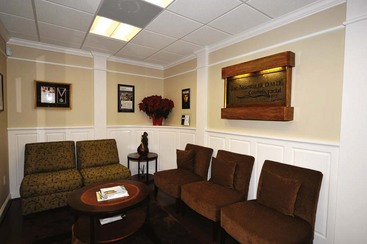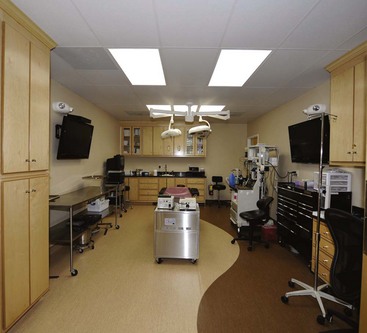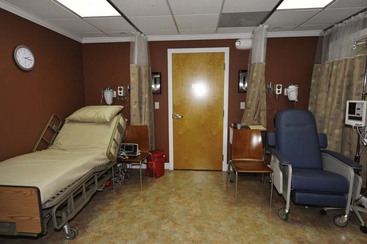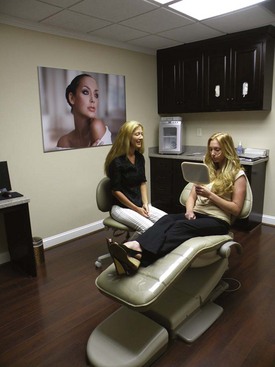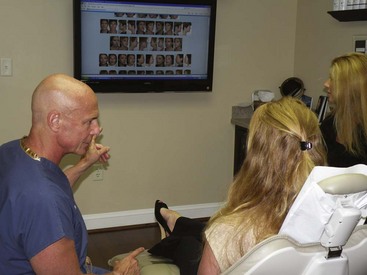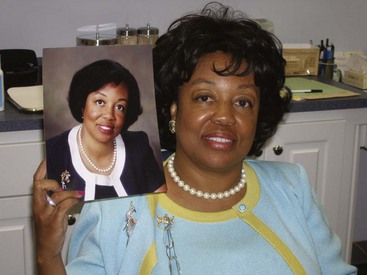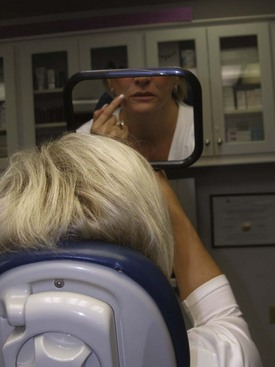2 Diagnosis of the Cosmetic Facial Surgery Patient
The Art of the Consult and the Office Patient Experience
The cosmetic surgery office should be clean, pleasant, and in most practices decorated to accommodate females, since the majority of cosmetic patients are women (Figures 2-1 to 2-4). Consider your experience at a very high-class hotel and try to duplicate that in your business. A patient greeter, providing drinks and snacks, assisting patients with paperwork, and having educational material available are all amenities appreciated by patients.
Meeting the Doc
Meeting a stranger and discussing one’s deficiencies can be very stressful for patients. When I go to examine a new patient, they are often perspiring from nervousness. A productive consult requires a relaxed patient. This is best achieved using an intermediary, and in my case this person is my cosmetic coordinator. She escorts the patient to the room, seats them, and makes nonsurgical small talk before addressing cosmetic concerns (Figure 2-5). She tells the patient about the surgeon, performs an “across-the-room” evaluation, and discusses some of the more obvious concerns. She may say, “I believe Dr. Niamtu will want to discuss eyelid surgery, cheek implants, and facelift with you.” She displays our website on the widescreen TV in each consult room and goes through specific procedure pages to discuss what we do and how we do it. She will also show the patient before-and-after pictures of relative cases (Figure 2-6).
After the preconsult, I am called into the room and introduced. This initial meeting can make or break a relationship. I always shake hands with the patient as I believe “laying of the hands” puts patients at ease and subliminally melds the doctor-patient relationship. A show of personal warmth, an unhurried attitude, and some small talk with the patient before getting to the cosmetic problems will be time well spent. I may ask them what they do for a living, how they heard about our office, how they are enjoying their summer, etc. Again, putting a patient at ease is an art form (Figure 2-7).
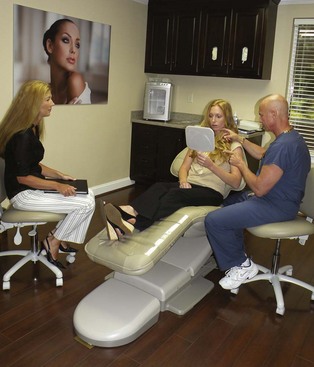
FIGURE 2-7 After a preconsult is done by the staff, the doctor enters the room and performs the formal consult.
Most of our patients register online and are asked to bring a list of cosmetic facial concerns to the first appointment. Nervous patients often forget to ask key questions. Patients also frequently are also asked to bring in younger pictures of themselves to see what they considered their strong or weak points and how they have aged (Figure 2-8).
The most important instrument used in the consult is a hand mirror. I ask patients to tell me what bothers them or what they would like to change and to show me in the mirror (Figure 2-9). Occasionally a patient will say, “Doctor, what do you think I need?” The novice surgeon should never fall into that trap. It is imperative that the patient take ownership of what bothers them or what they would like to change. A patient that cannot communicate their cosmetic problems may have other underlying problems. Some patients are embarrassed to discuss the topic and need some prodding. The other problem with answering the question “What do you think I need?” might encourage the surgeon to say the patient could benefit from eyelid surgery, and the patient may think their eyes are their best feature and be offended!
Stay updated, free dental videos. Join our Telegram channel

VIDEdental - Online dental courses


